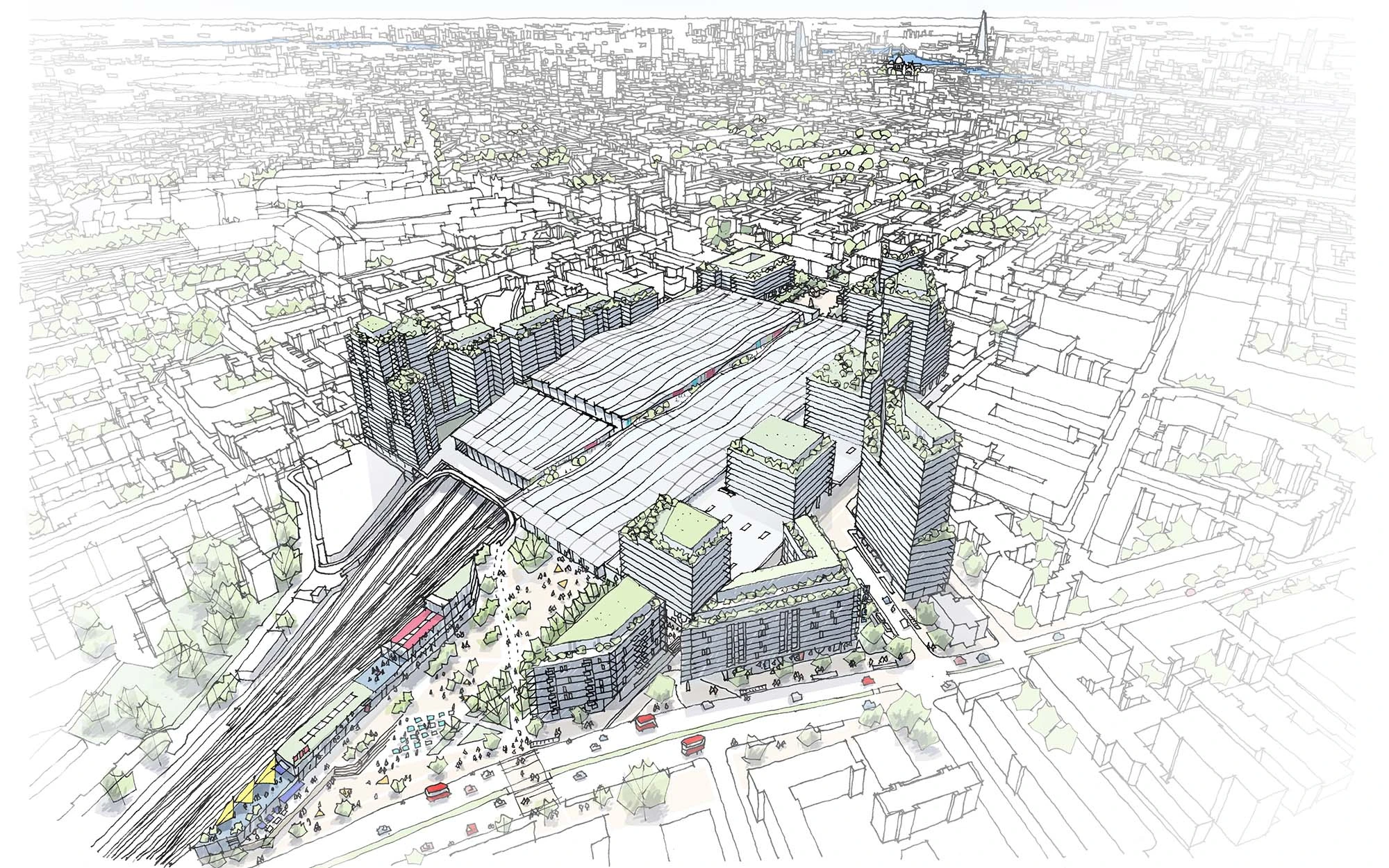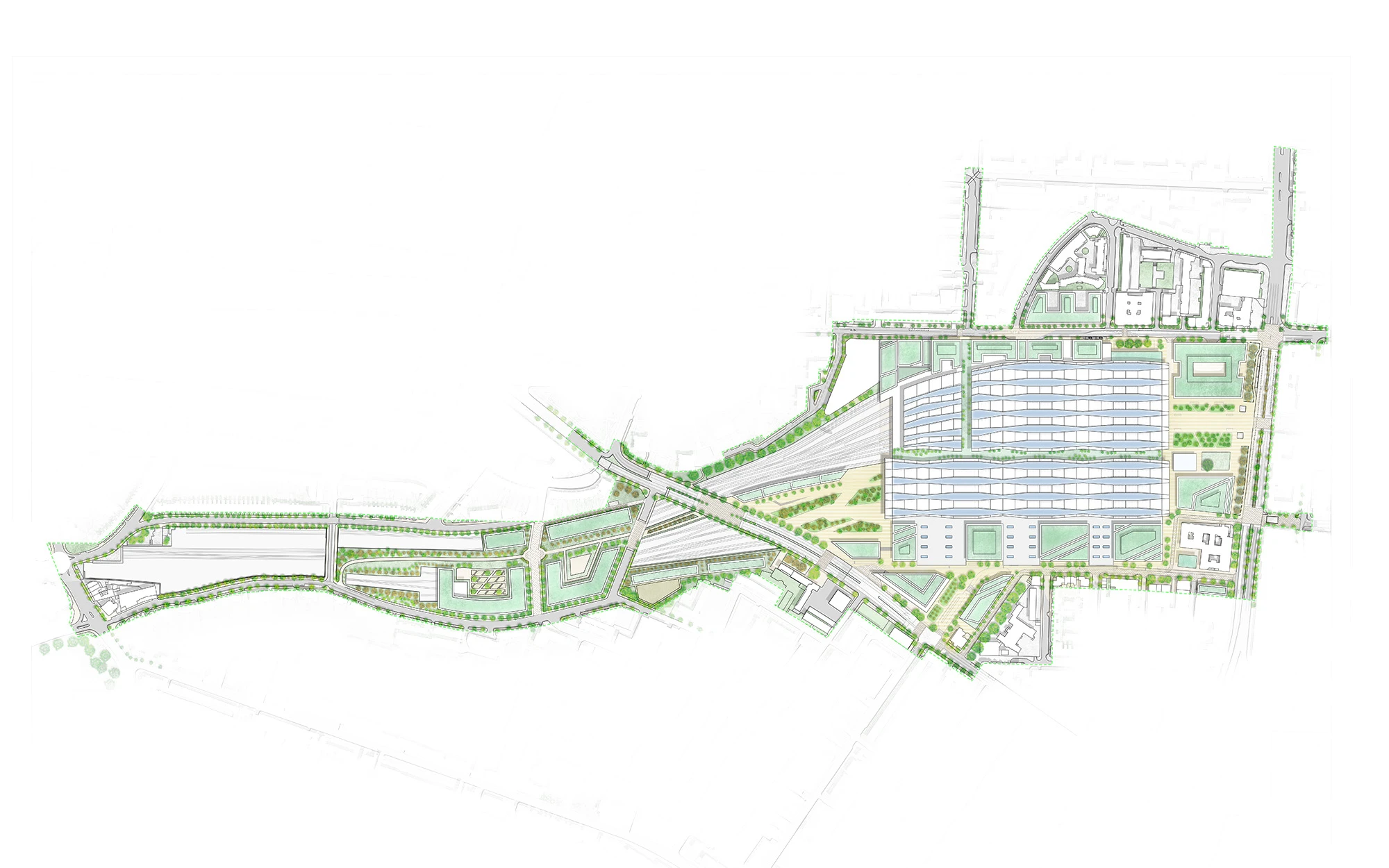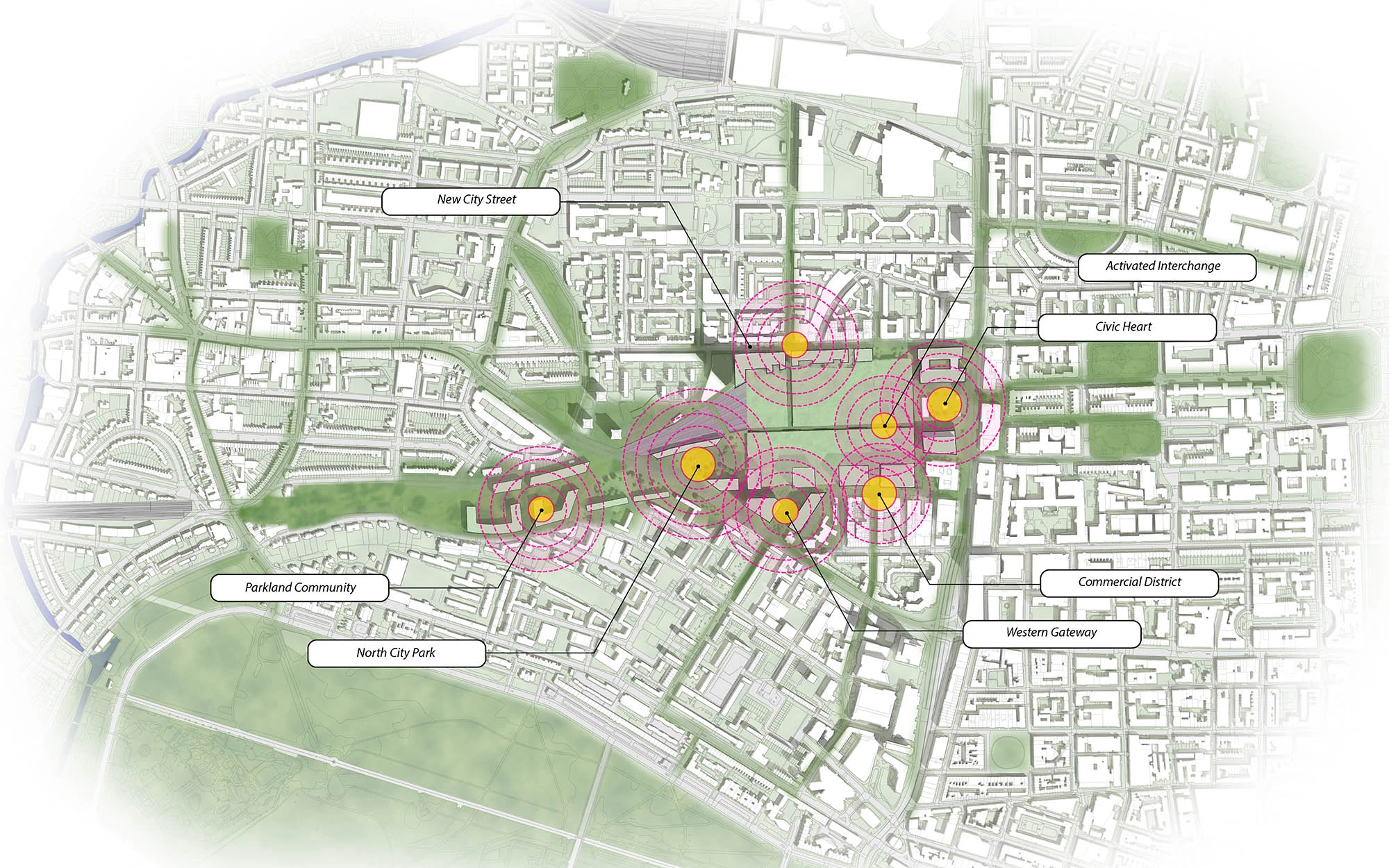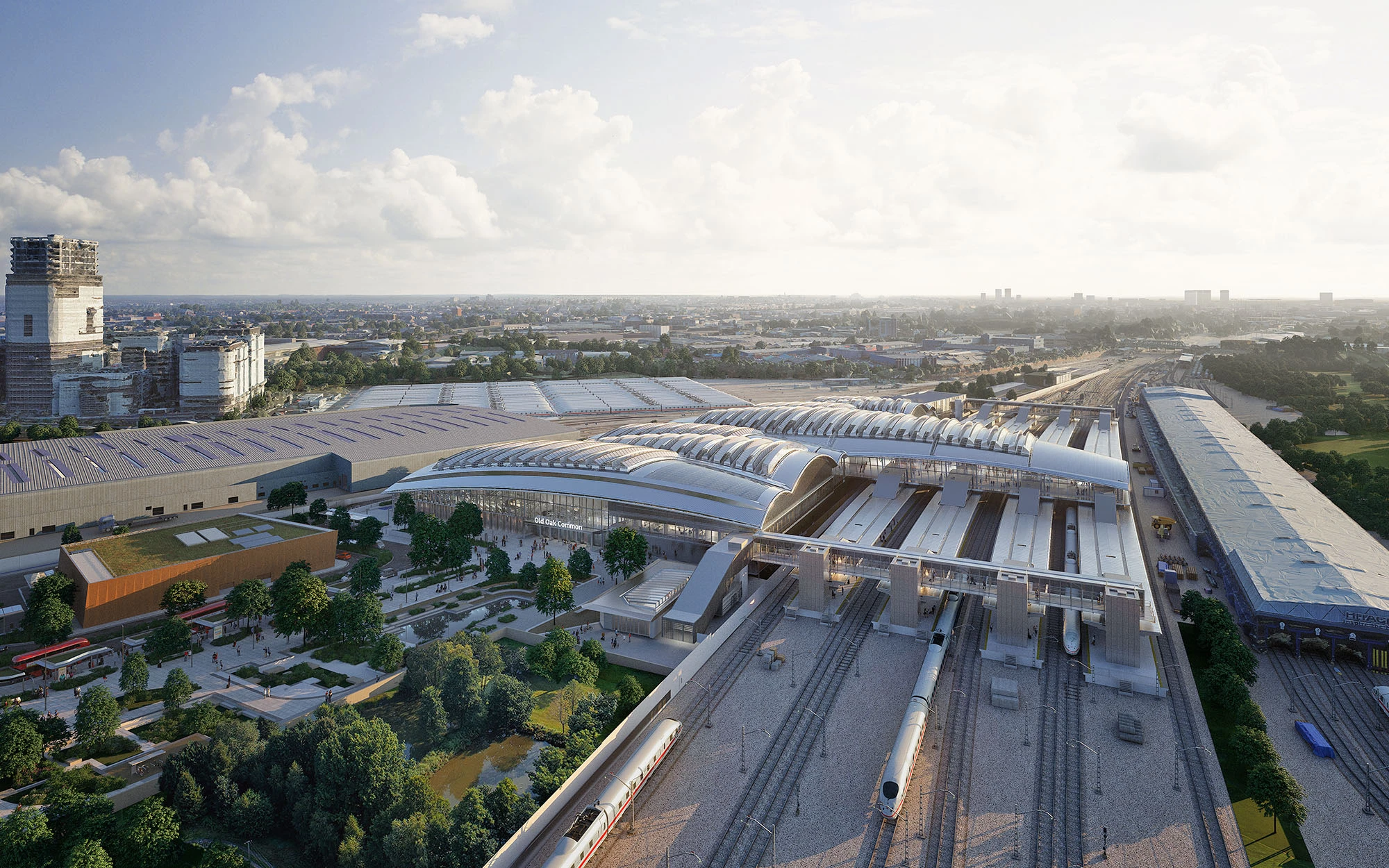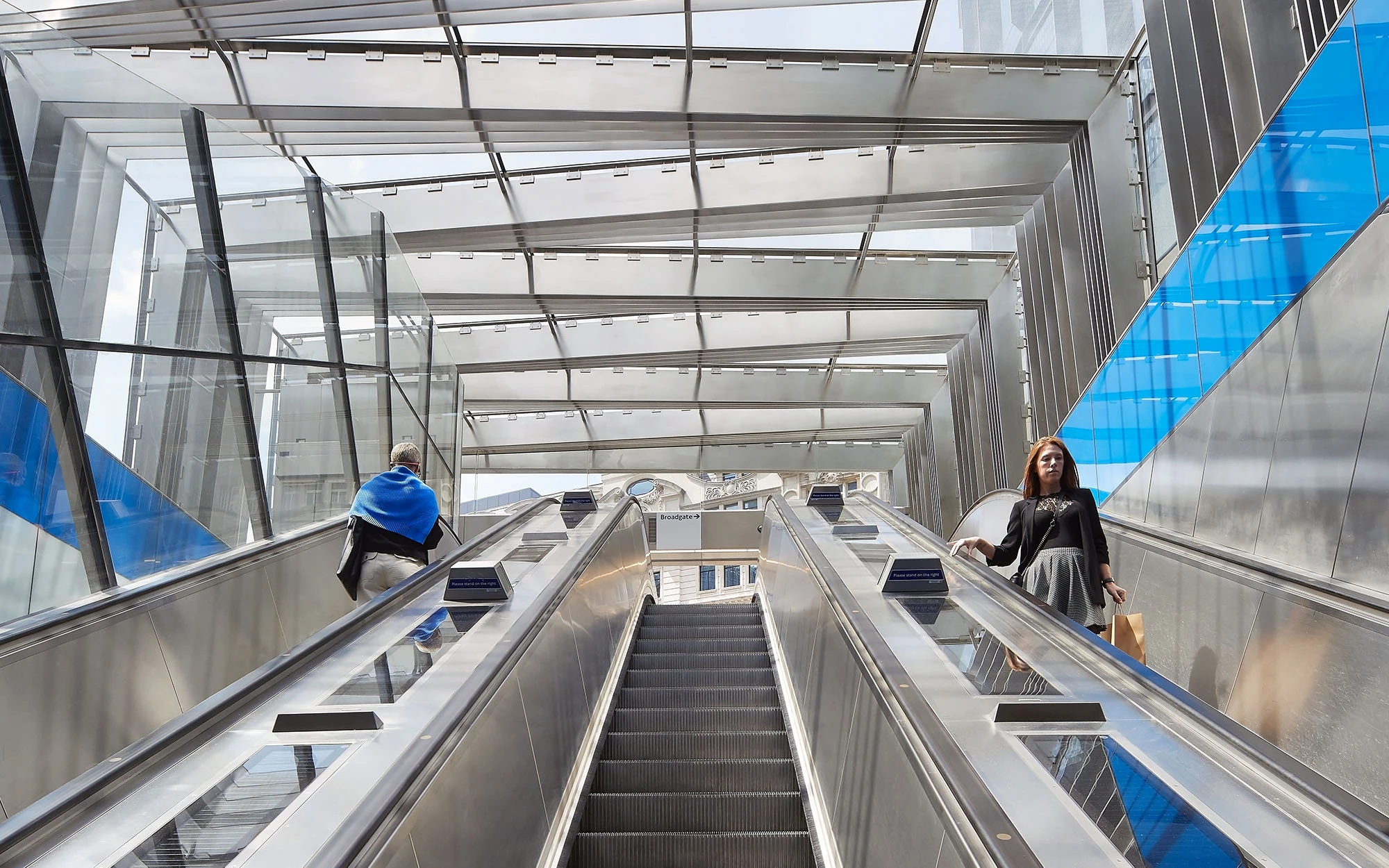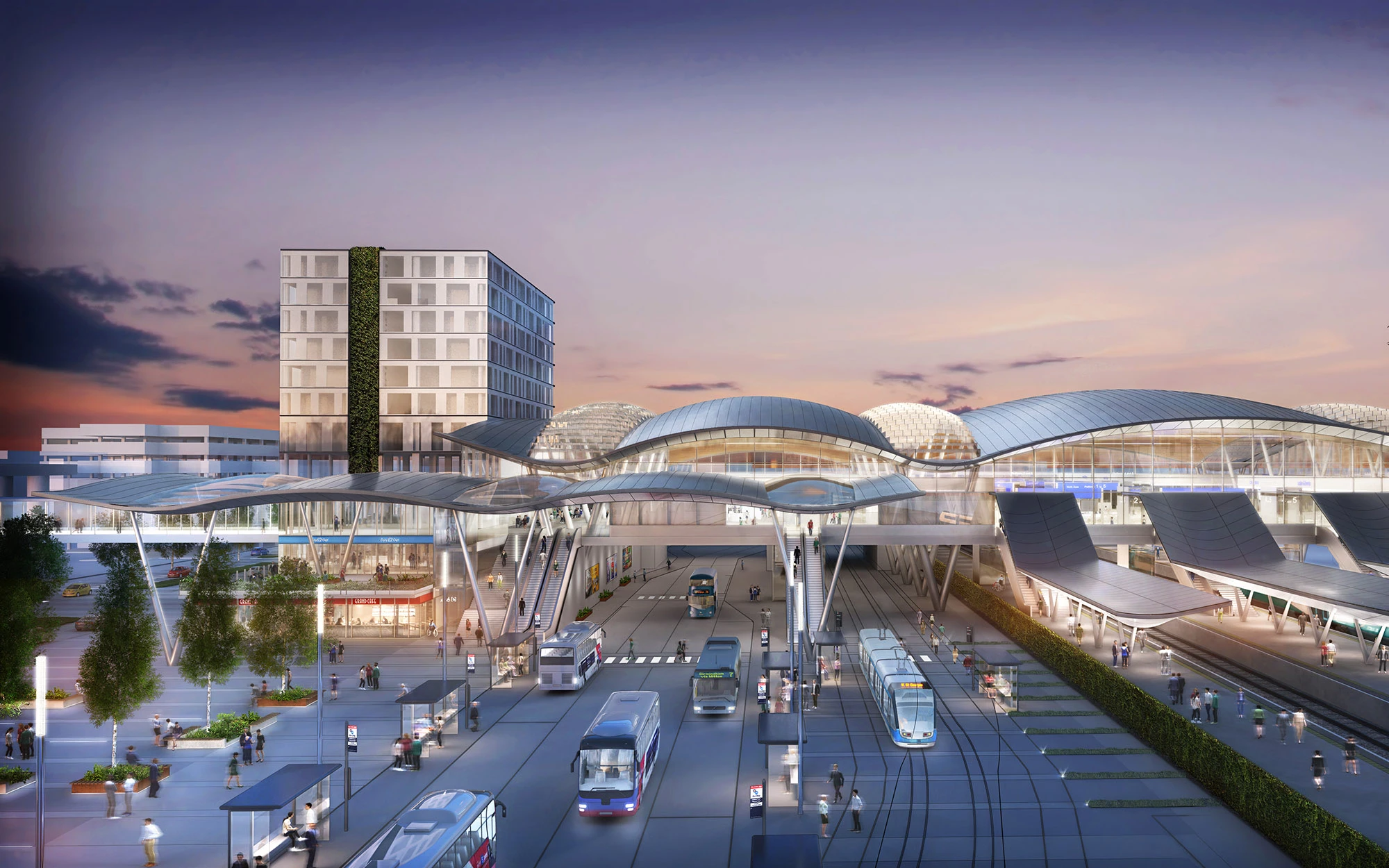With the arrival of HS2, Euston will become London’s largest station by area at 37 hectares, with the entire site encumbered by surface or subsurface rail infrastructure. It is simultaneously an important part of the fabric of the city and in particular the neighbourhoods of south Camden and north Bloomsbury. The brief for this major reworking of the station, the first since the 1960s, was three-fold; to accommodate new and existing rail infrastructure (an interchange for four stations into one); to create public space and active frontages, uniting the different communities and user groups around the station, and to identify the potential for over site development (OSD).
Wilkinson Eyre developed the masterplan for the Euston, with engineering support from WSP; stakeholders included transport-related partners (TfL LUL, Network Rail) conservation and resident groups. The London Borough of Camden, a major landowner and author of the Euston Area Plan was a key strategic partner.
Euston has always had an image problem, invisible on all sides and with no real station square to the main frontage. As the station is so great a footprint, and has been present for so long, a large part of the masterplan’s role is healing connections across the city. Our concept was to address each adjacent (and diverse) neighbourhood with a new frontage or public space, and then connect these neighbourhoods through or over the station, for the first time since the station was built.
The outcome was a workable framework with a clear set of recommendations informing future design decisions. These included improved sightlines and clear primary reference spaces and buildings that improve the image of the station; legible onward connections (and space-take) to buses, taxis and the underground; clearly identified commercial opportunities within the plan; the unification of different adjacent communities through legible pedestrian and cycle routes.
Although a dense city centre site, a strategy to keep as many perimeter trees as possible was established. A network of green roofs and high-level green routes through and over the station maintained bio-diversity corridors. At the northern end, the site narrows into new residential blocks built over the tunnel throat; these were laid out as quiet garden courtyards. Careful thought about the delta of train lines/platforms, and their depth, reduced the overall dig requirement by millions of cubic metres, and operational considerations balanced an oversite build with natural daylighting and ventilation of the main station.
